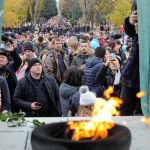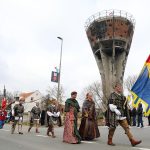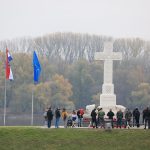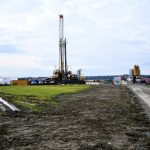November 18, 2019 saw Croatia mark Vukovar Remembrance Day, the 28th anniversary of the fall of the City of Heroes during the Homeland War. TCN was there.
Three weeks ago, I was on the island of Hvar helping my father-in-law with the annual olive harvest in the family field.
This week I attended the Vukovar Remembrance Day parade, marking 28 years since the fall of Vukovar after a bloody 87-day siege early in the Homeland War.
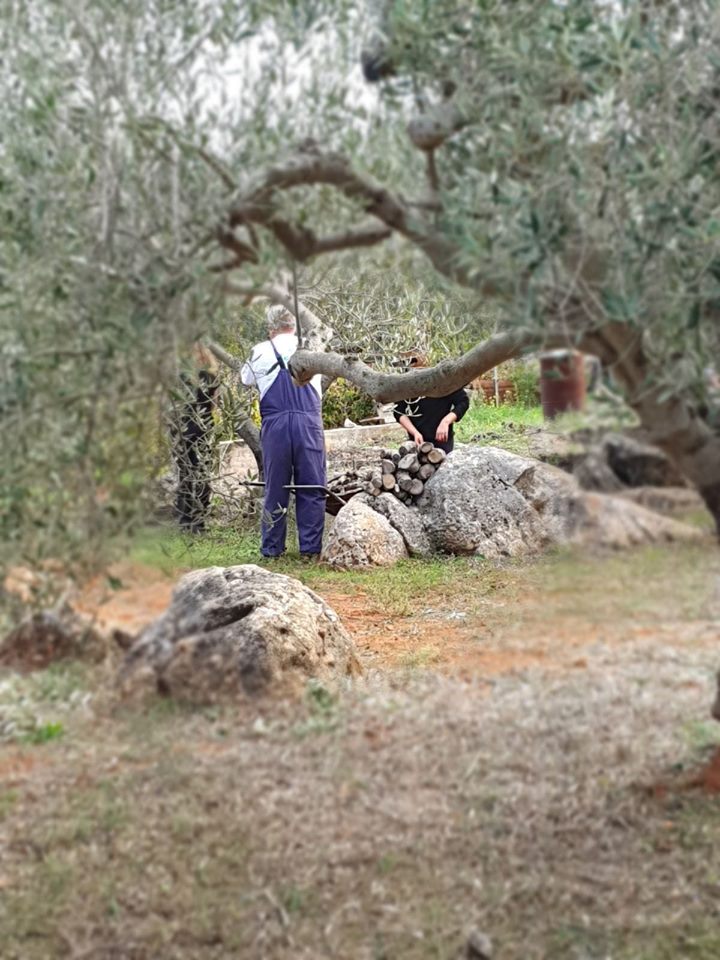
Both events are important Croatian traditions and take place in the same country, but they are two events from different worlds. While many Dalmatians can pick their olives and relax until the summer tourist season brings them generous tourism income, life in eastern Croatia could not be more different. Economic hardship, unemployment, emigration, the effects of being at the forefront of the Homeland War still very much in evidence. For a long time I have known that my experience of life in Croatia living on a happy, sunny tourist island was only part of the picture, and visiting Vukovar and taking part in the annual Vukovar Remembrance Day parade has been on my list. This year, finally, the chance to visit came.
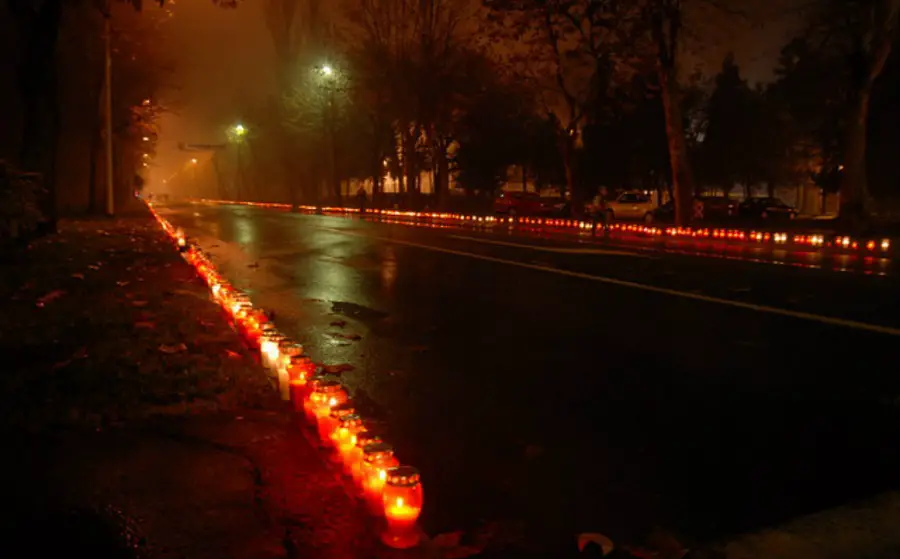
Remembering Vukovar touches every part of the country around the November 18 anniversary, most notably with the candlelit lanterns adorning every Vukovar Street in the country. And there is a Vukovar Street in every town and many villages, including the street I live on in Varazdin County.
Before I continue, a disclaimer. When I started TCN, I received some very good advice from a local. TCN was a great idea, but I should never write about politics, or the portal would be finished. There were other topics which foreigners should not write about as well – religion, war veterans and Vukovar, for we foreigners simply do not understand. It is an argument I understand and actually partly agree with, but on the other hand, if we do not speak about some things more openly, there is no hope of addressing those issues. While researching my trip to Vukovar, I was struck at how little information there was out there in English about what happens at the Vukovar Remembrance Day parade. And so I decided to write a detailed overview of my impressions of the most emotional day in the Croatian calendar. I am sure it will bring attacks from all sides. I am ok with that and with the inevitable trolls who will latch onto this article, for I have long ago realised you don’t get branded as a “Tito cock sucking British Jew writing fluff to humanise mass murderers in the Jewish style when socially engineering a people for ruin” by talking about the weather. But I hope it will also explain things a little more and encourage others to make the journey in years to come. It is a very intense but highly rewarding experience.
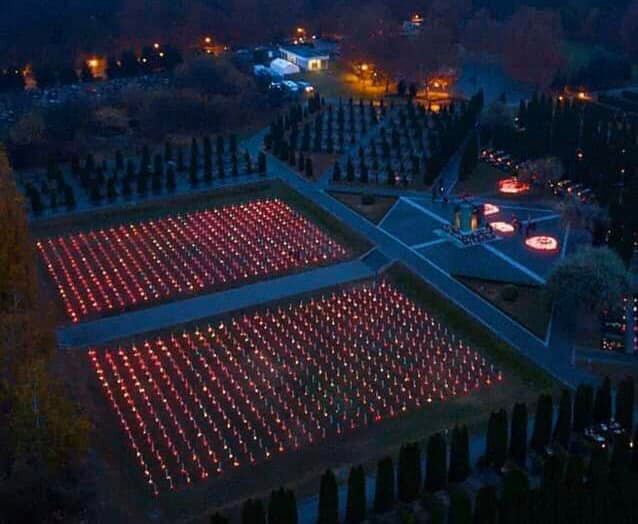
This drone shot of the Vukovar Memorial Cemetery the night before set the scene for what was to come the following day, a 6 km parade from the hospital and museum which became a symbol and focal area of the siege, to a commemoration service at the cemetery, a service attended by the Croatian President, Prime Minister and a host of other dignitaries, as well as tens of thousands of people.
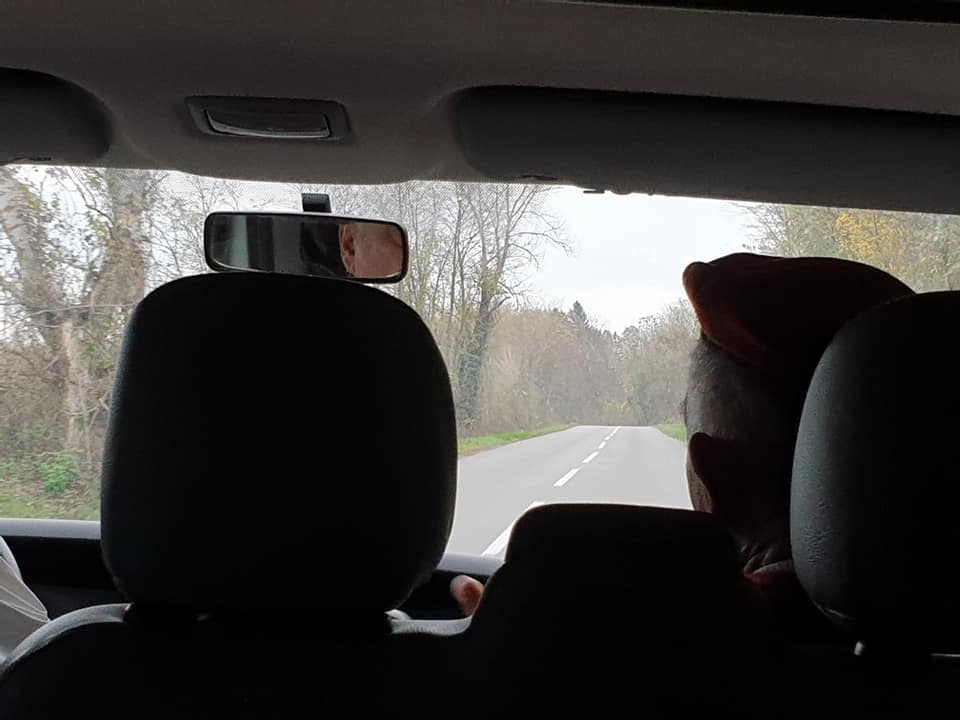
My journey that day actually started in Vinkovci, the oldest continuously inhabited town in Europe, where I was staying with friends. I managed to hook up with the Dubrovnik Trombunjeri troupe, who proved to be not only excellent company, but also very insightful guides. The road we took to Vukovar had been the only access the rest of Croatia had to the city at the height of the attack.
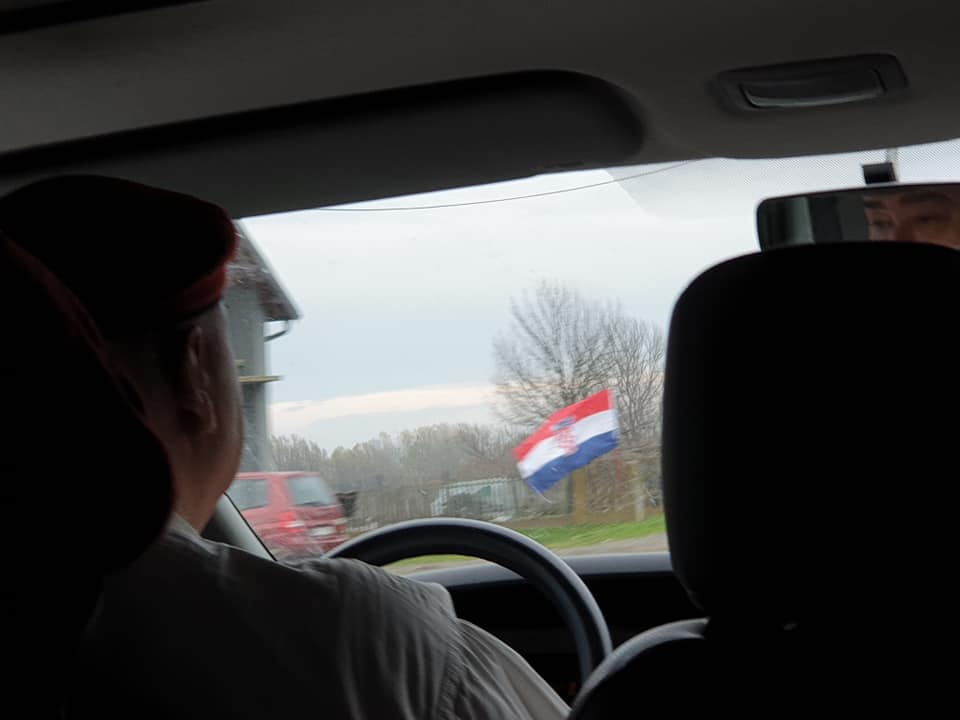
Flags, so many flags adorned the road as we drove past.
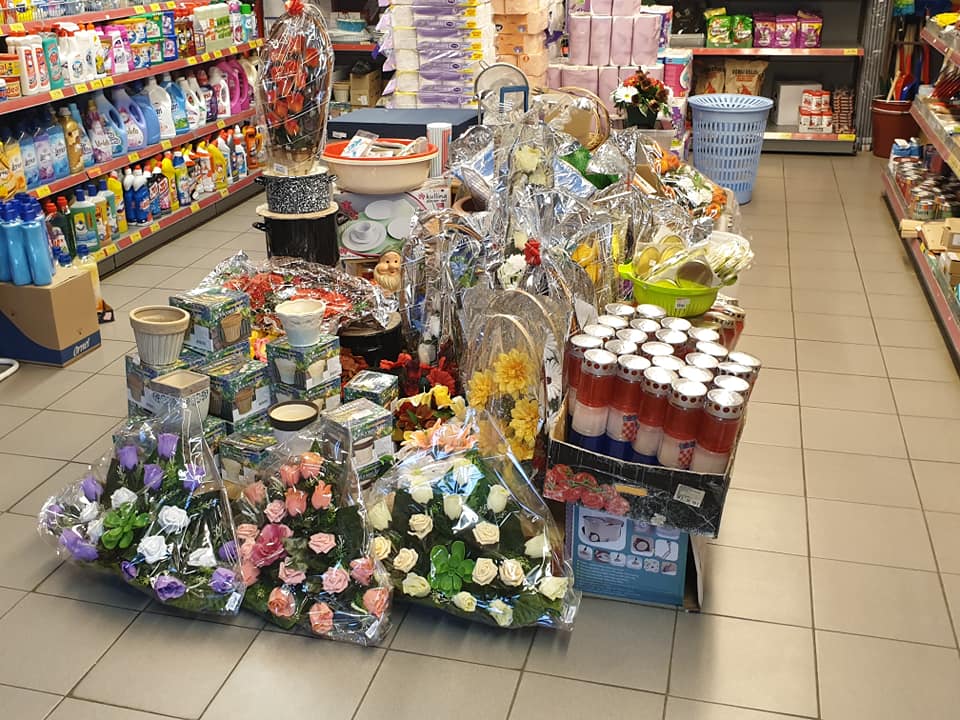
And the local shops brought in additional products for the occasion – lanterns and wreaths.
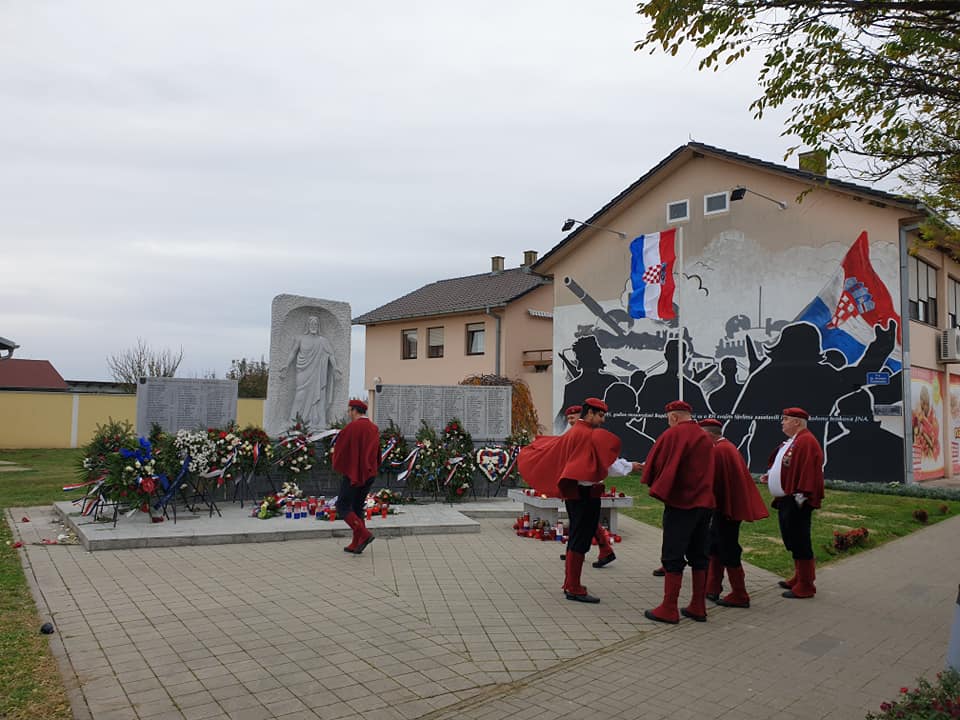
Our first stop was the village of Bogdanovci, where the Trombunjeri stopped to pay their respects at the memorial there.
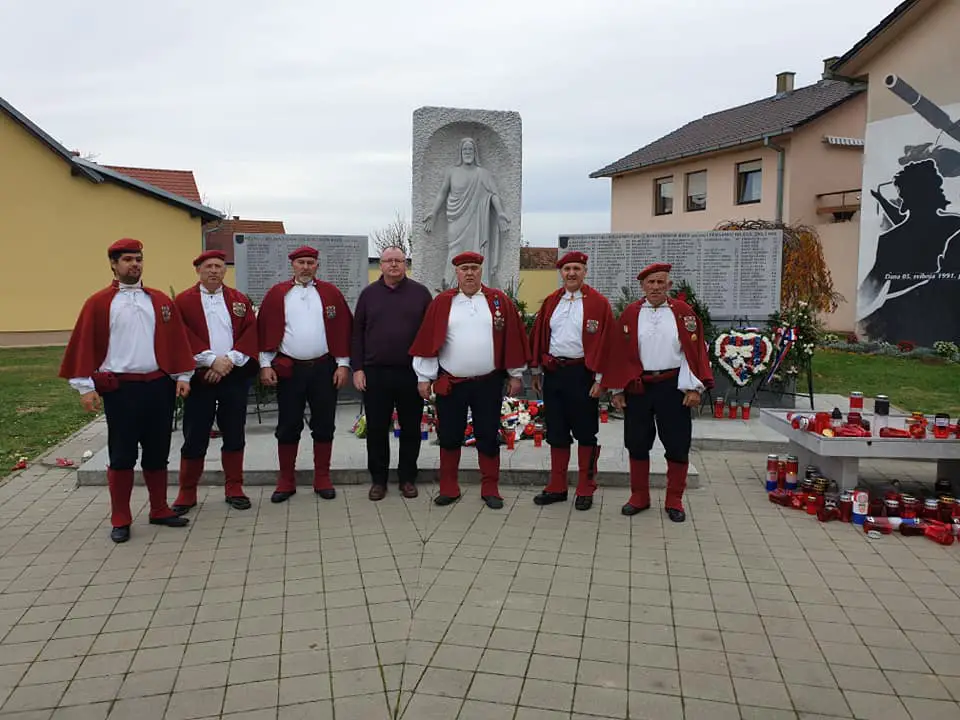
As the lifeline to Vukovar, Bogdanovci was fiercely contested.
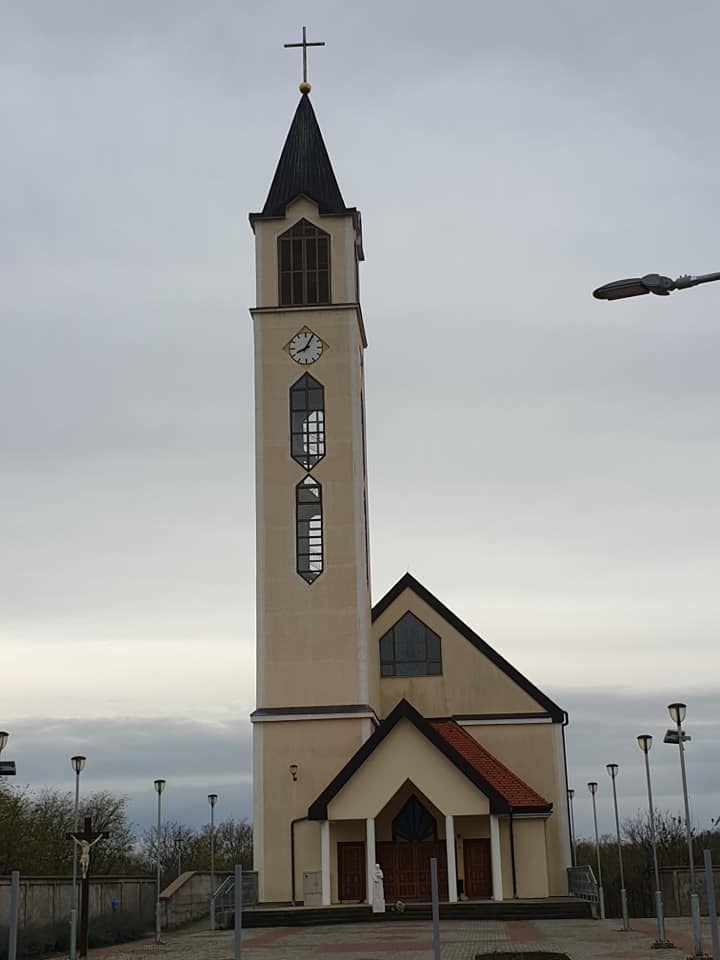
Having fallen, the village was razed, including the church which has since been rebuilt.
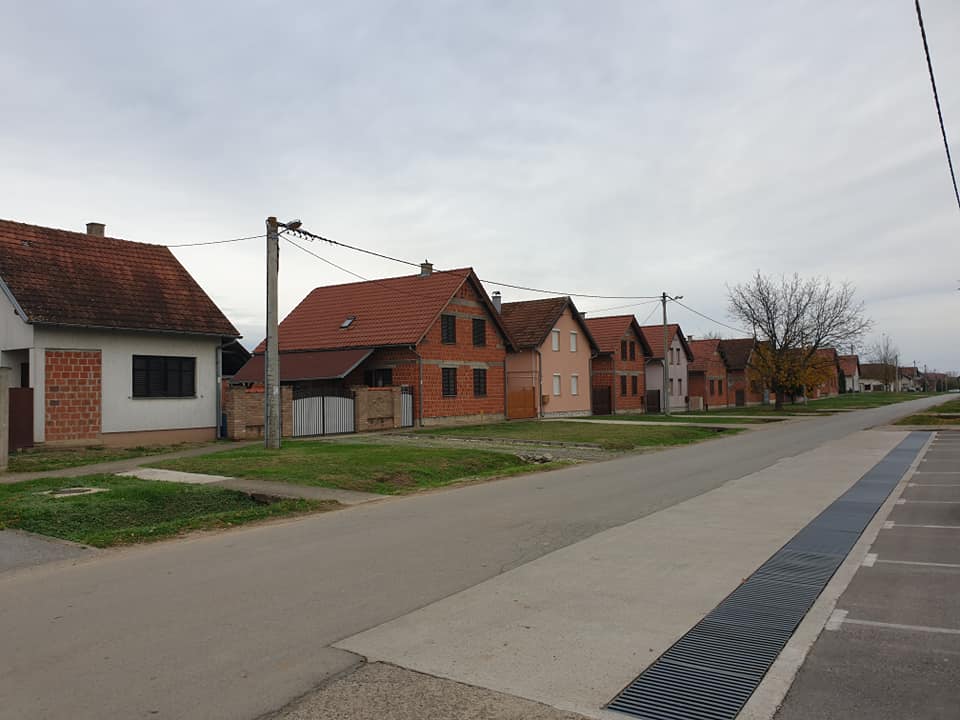
And all the housing – rebuilt by the State.
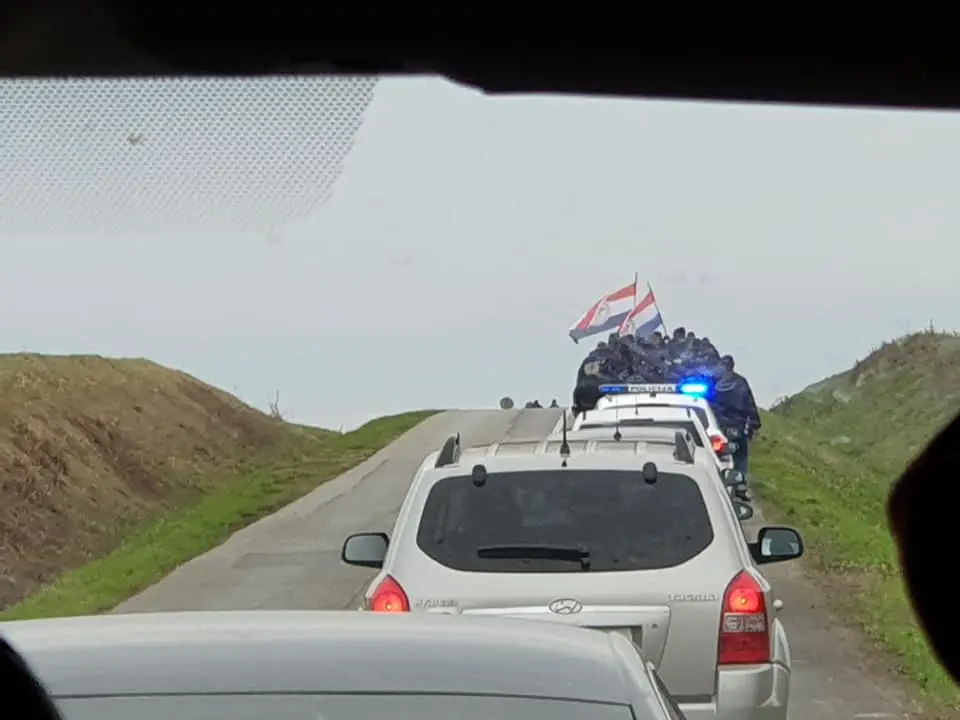
Onward to Vukovar, and then the traffic slowed. I was expecting it to be due to a tractor or something similar, but it was men marching solemnly along to Vukovar.
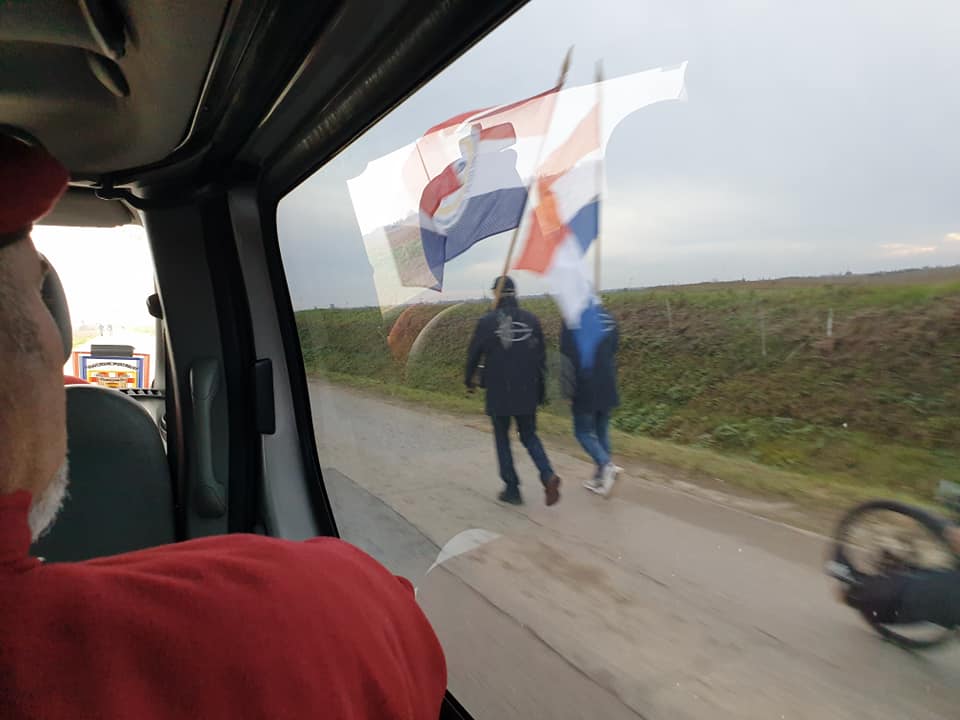
In groups and in pairs.
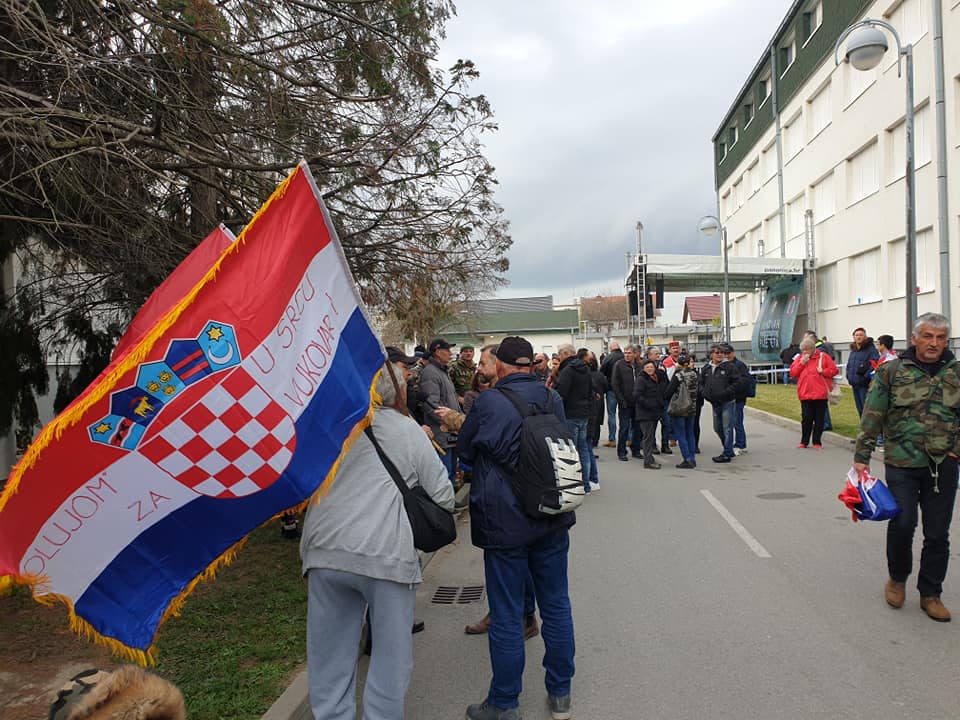
The Trombunjeri went to their official programme, and I wandered towards the centre. So many flags. The atmosphere was festive, the cafes overflowing, and the beers and rakija were already flowing even though it was not yet 9 am. The joy of catching up with friends, the pain of recalling the past – this was going to be an intense day.
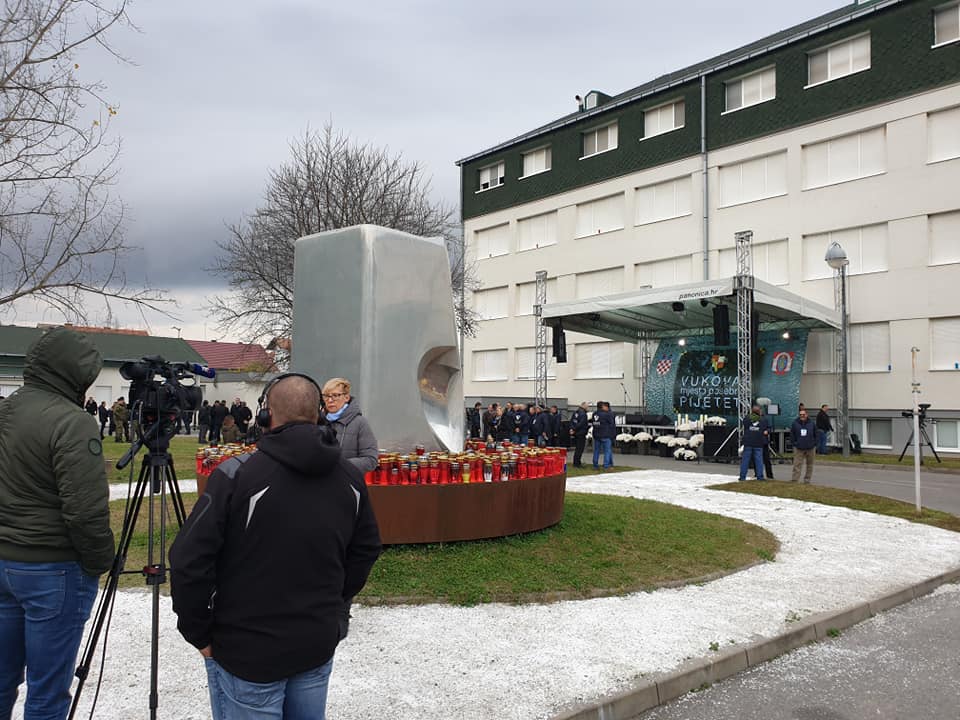
I toured the hospital museum a couple of years ago with members of the diaspora during the Osijek diaspora conference – it was harrowing. This is where the ceremony would begin. National television was broadcasting everything live, and the crowds had already built up. I decided to find a spot in the crowd away from the hospital to film the parade when it started.
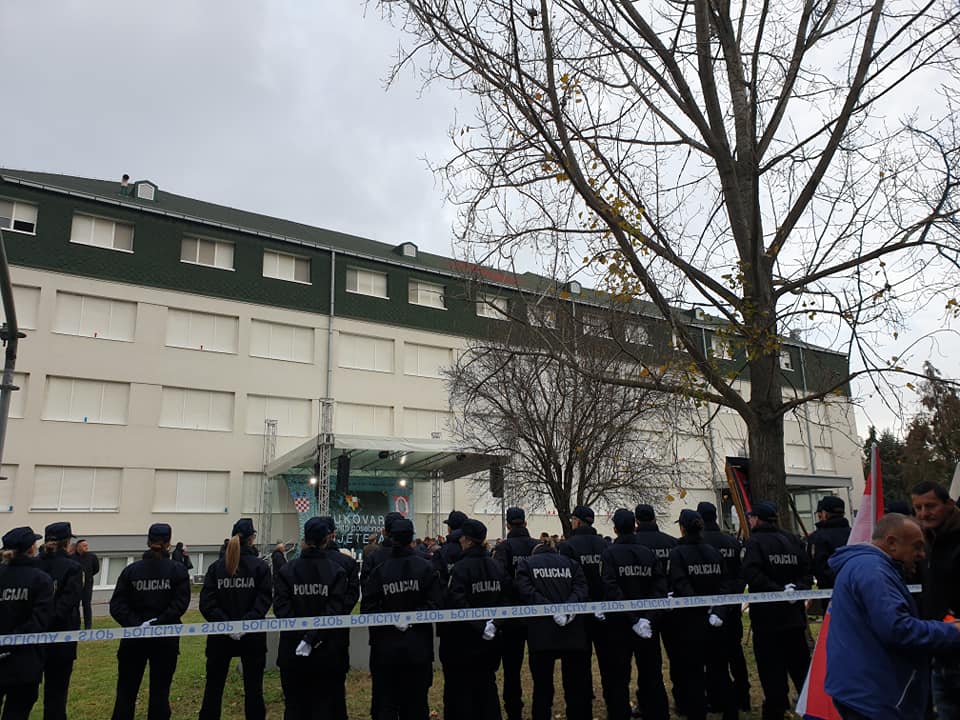
A special mention for the police and organisers. The policing was exceptional all day, from crowd control to traffic management. With so many people descending on the town, it could easily have descended into chaos, but it was superbly organised.
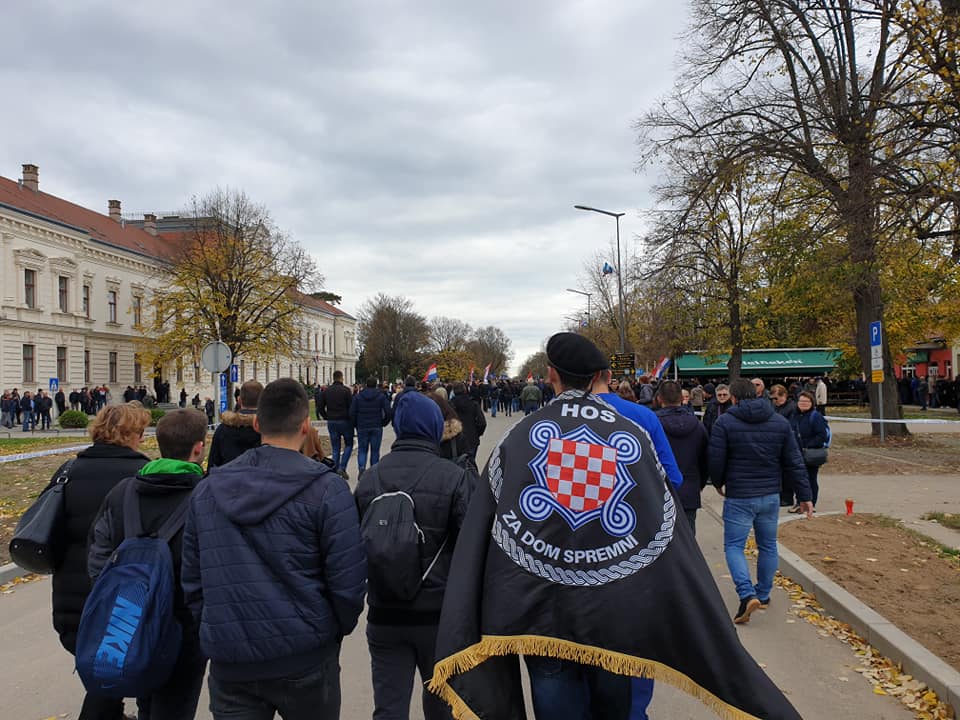
The controversial ‘Za Dom Spremni’ slogan, part of the HOS insignia, was very evident. I mention it not to start a debate, as the issue is complex, but simply to document it. HOS were the heroic defenders of Vukovar, and so the slogan is not considered controversial there.
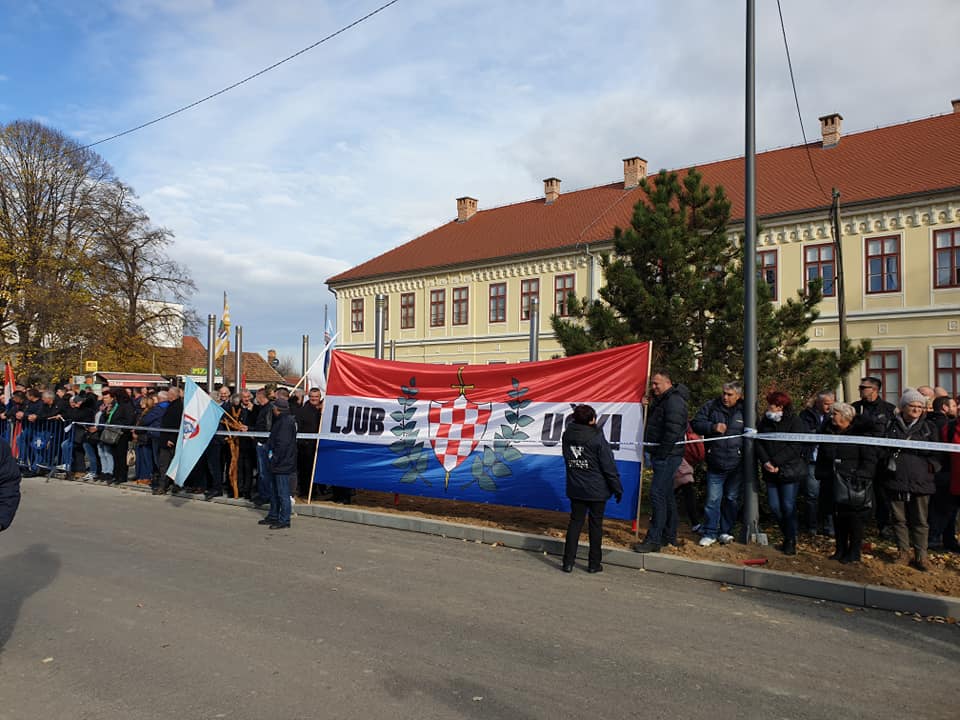
The flags were everywhere, and from every part of Croatia, and Herzegovina.
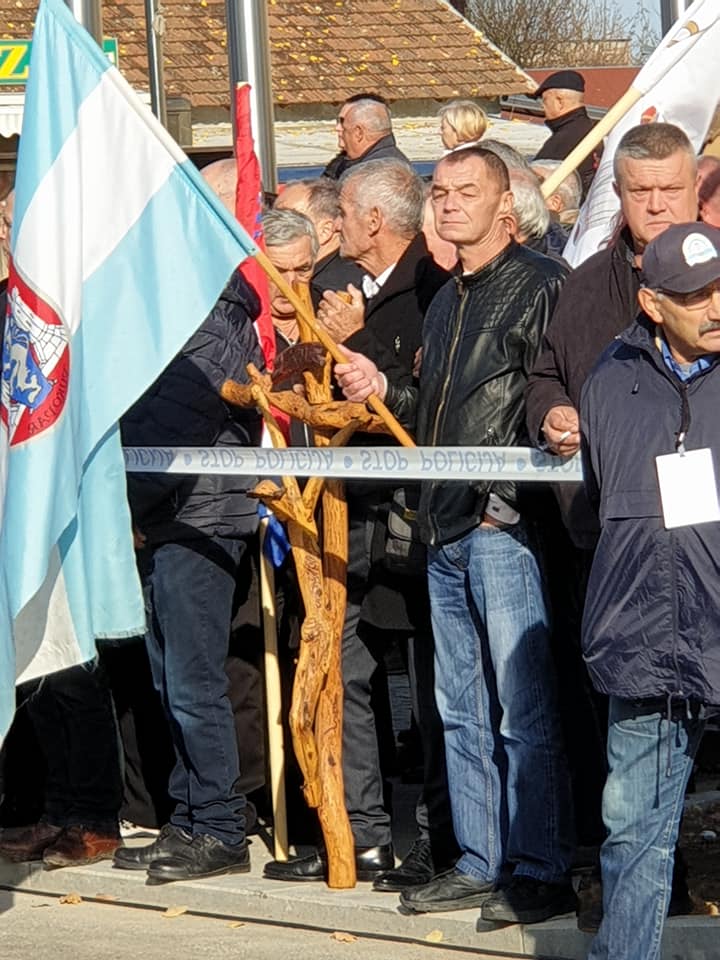
This old man with this carved wooden cross caught my attention.
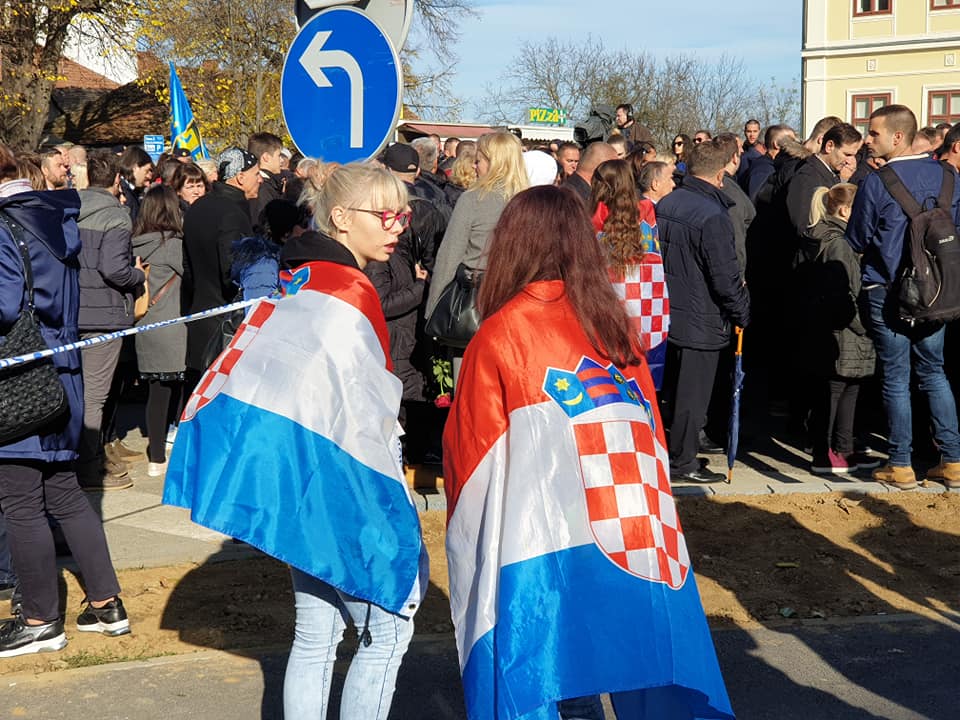
Flags everywhere.
And then things began. The Croatian National Anthem is one of the most powerful I know, arousing emotions where the British equivalent never could. God Save the Queen just doesn’t compare. Put the anthem in an emotionally charged situation such as Vukovar Remembrance Day, and the effect is exponential.
And so they came. The first of thousands, including the bright colours and banners of the Sinj Alka, Dubrovnik Trombunjeri, troupes from Klis, Pozega, Karlovac and many others.
Followed by the military brigades.
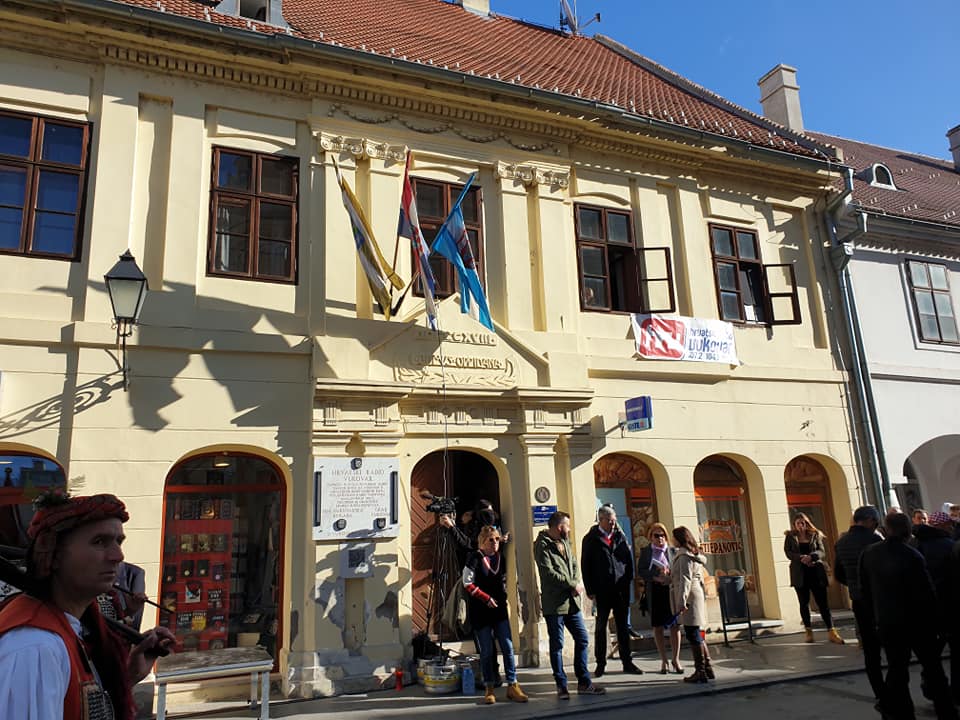
And onward we walked, through the historic centre of Vukovar, past the Radio Vukovar building, where the famous reporting of Sinisa Glavasevic was being played on the loudspeaker.
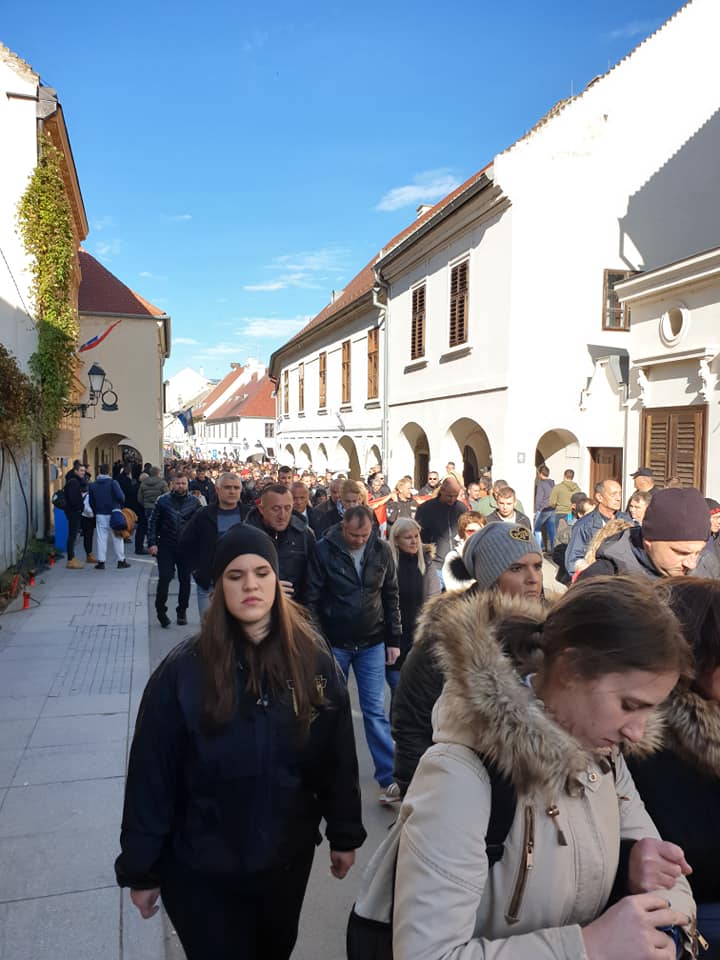
Thousands.
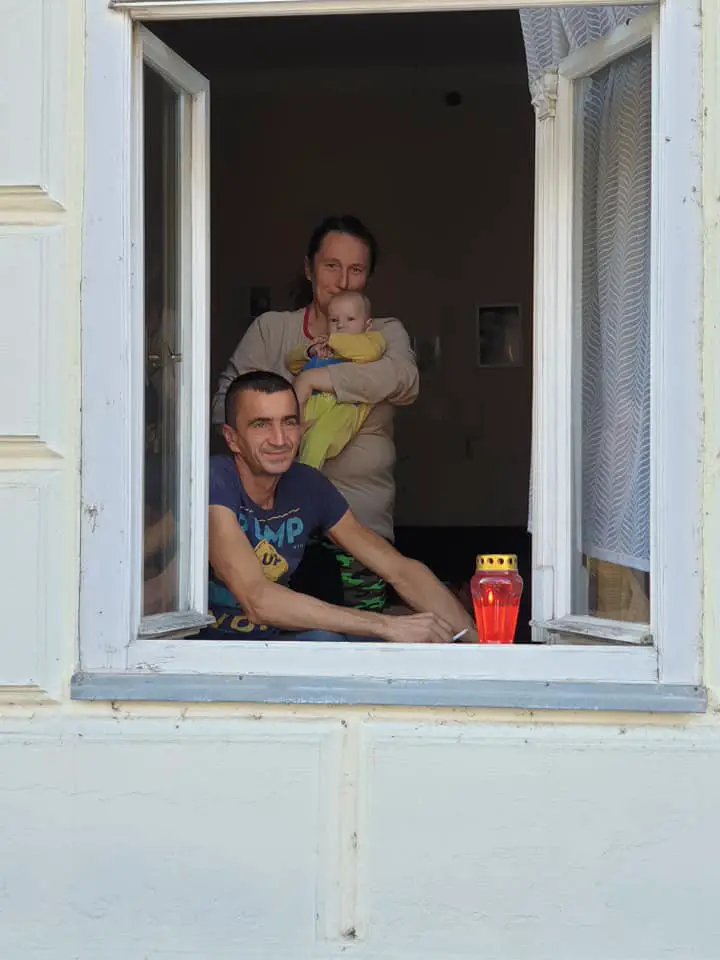
And then I saw – and captured – the two images which will stay with me the most from this intense day. Walking along the high street, a few people were taking photos of this family, who were watching the parade from their living room. I asked if I could take a picture, and the father motioned his assent. A powerful picture, but one which was about to get more powerful…
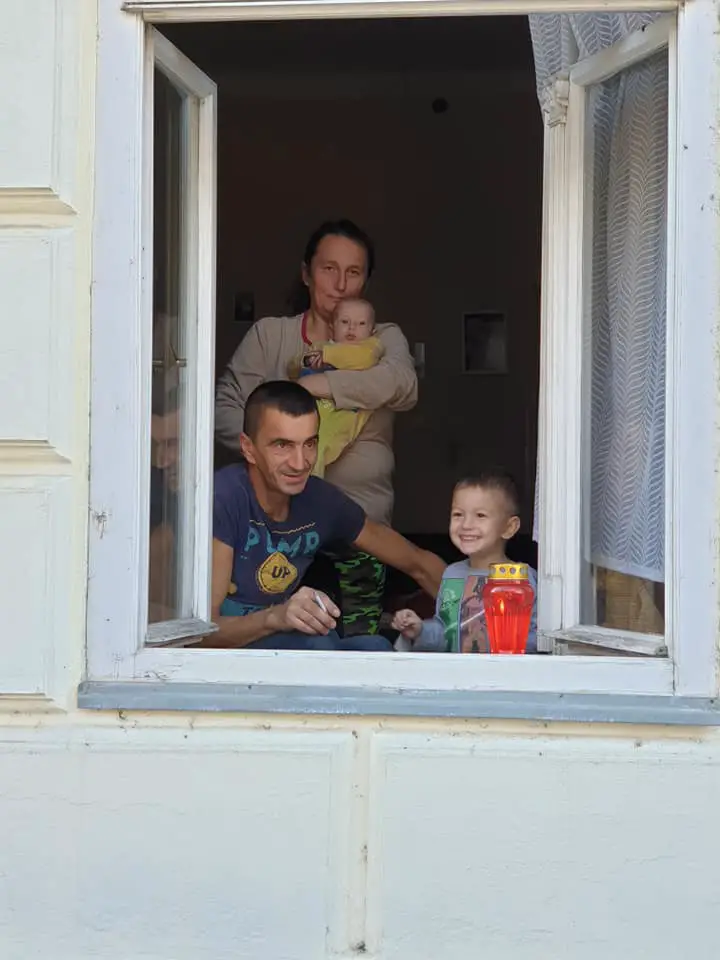
… as a little bundle of joy, totally oblivious to what was happening, burst into the room. The next generation of Vukovar residents – may the politicians not fail him and his generation.
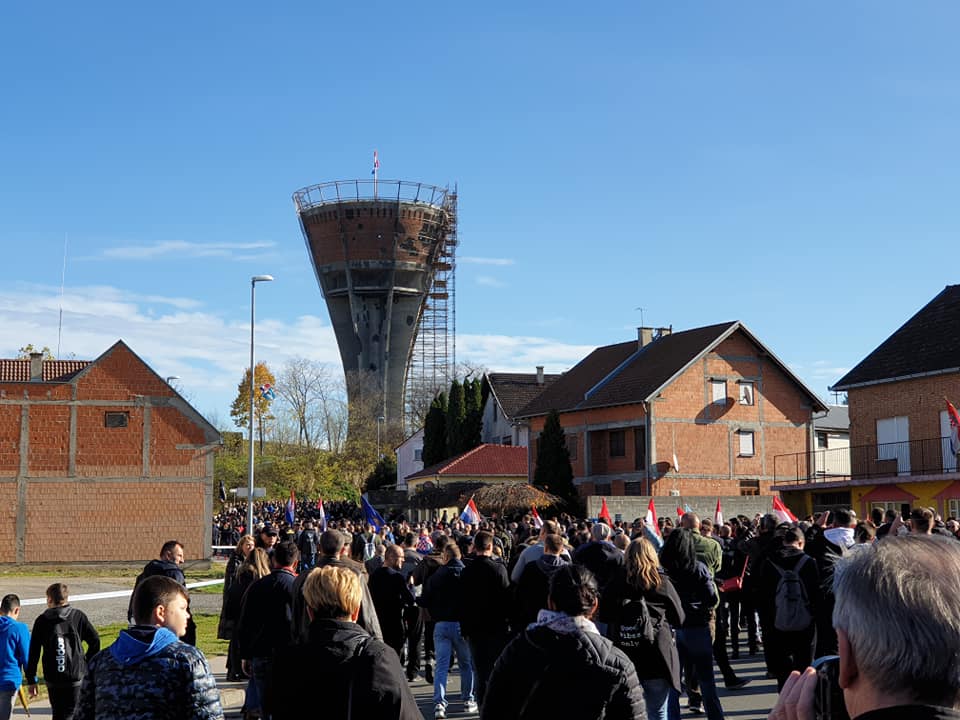
Onwards past the iconic Vukovar water tower.
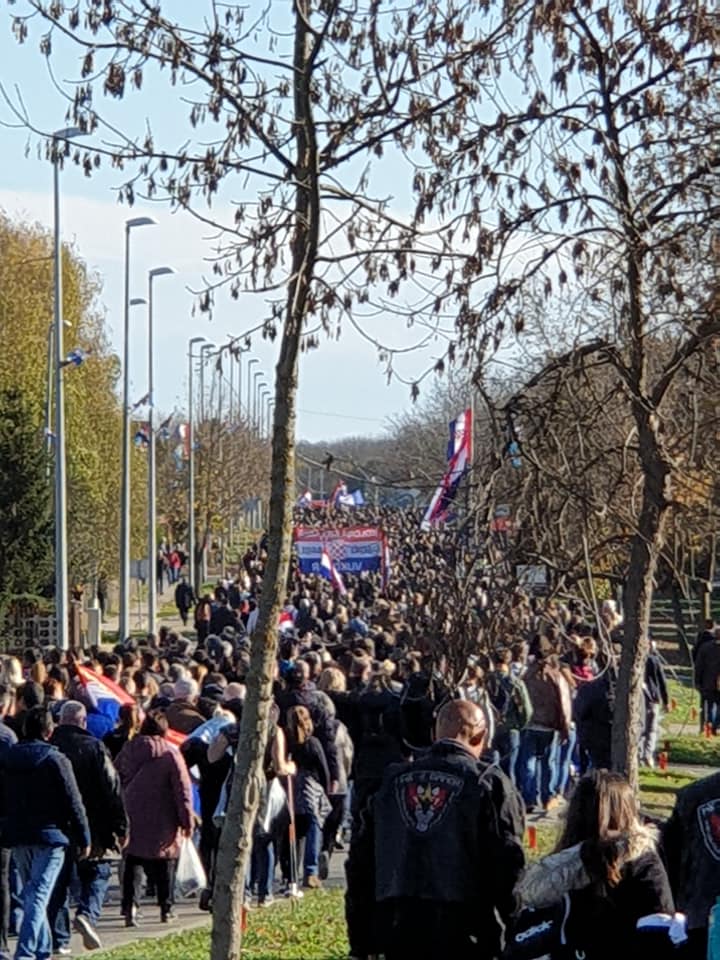
Thousands.
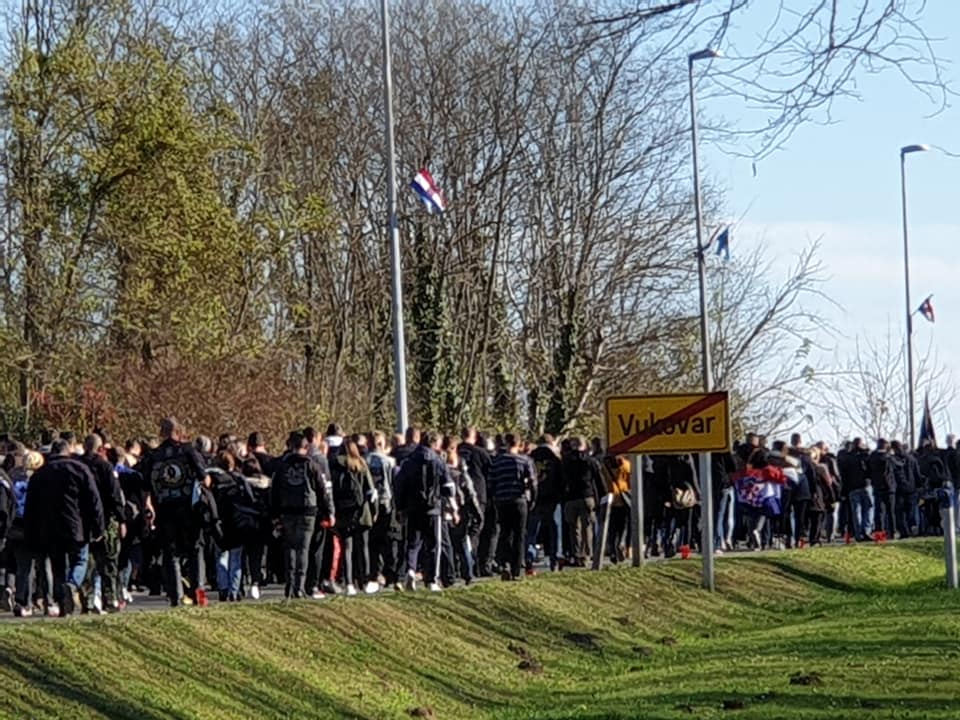
Onward, outside the city limits.
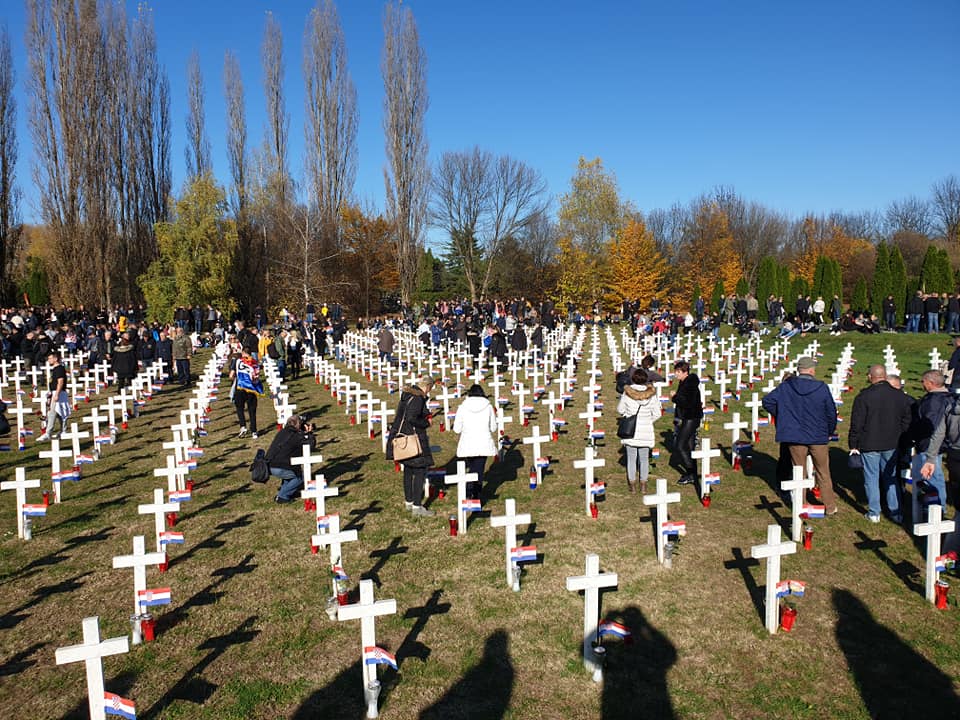
And into the final destination, the Vukovar Memorial Cemetery. Humbling.
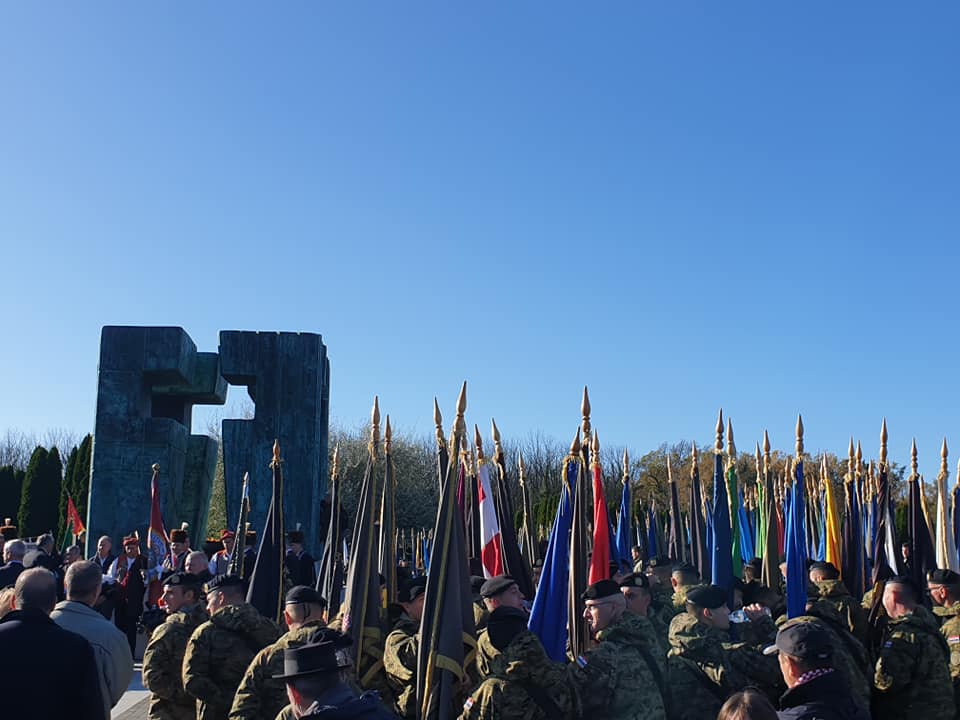
I was late for the laying of the wreath, but here is a little of the atmosphere near the eternal flame.
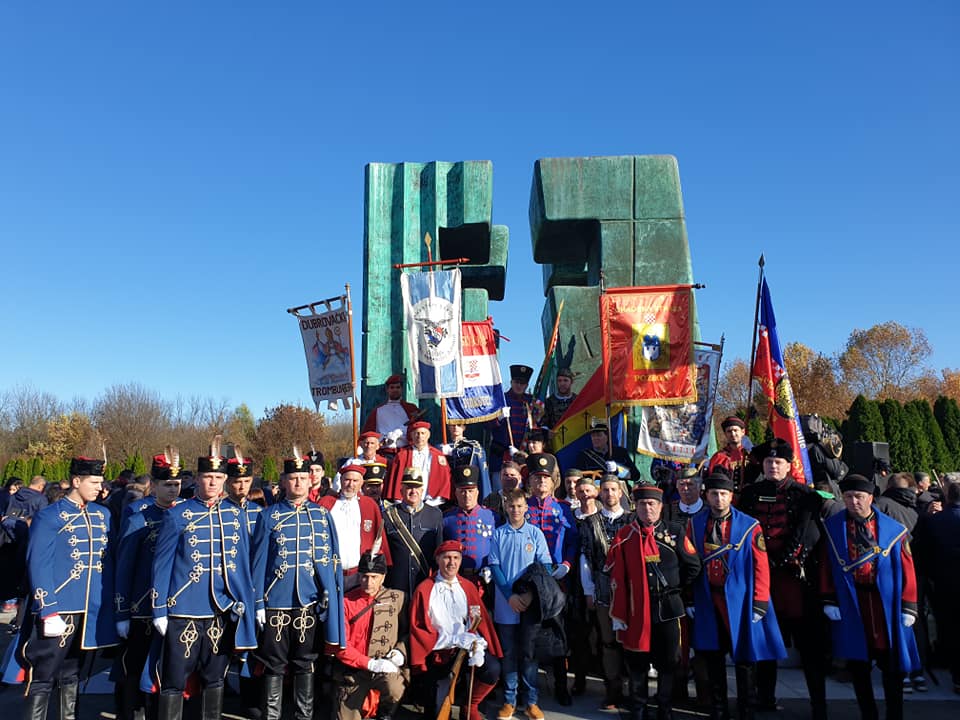
The traditional troupes from all over Croatia posed for their photographs.
There was a commemorative service which was broadcast live on television. I went instead with the Trombunjeri and the others back into town by bus. The trip took us on a detour through Ovcara, scene of a large massacre after the fall of the town. From there, the Croatian army had invited anyone who wanted to come to a lunch of ‘grah’ (beans) and so we headed to the tents by the museum there, which also housed some incredible examples of the weaponry used during the conflict.
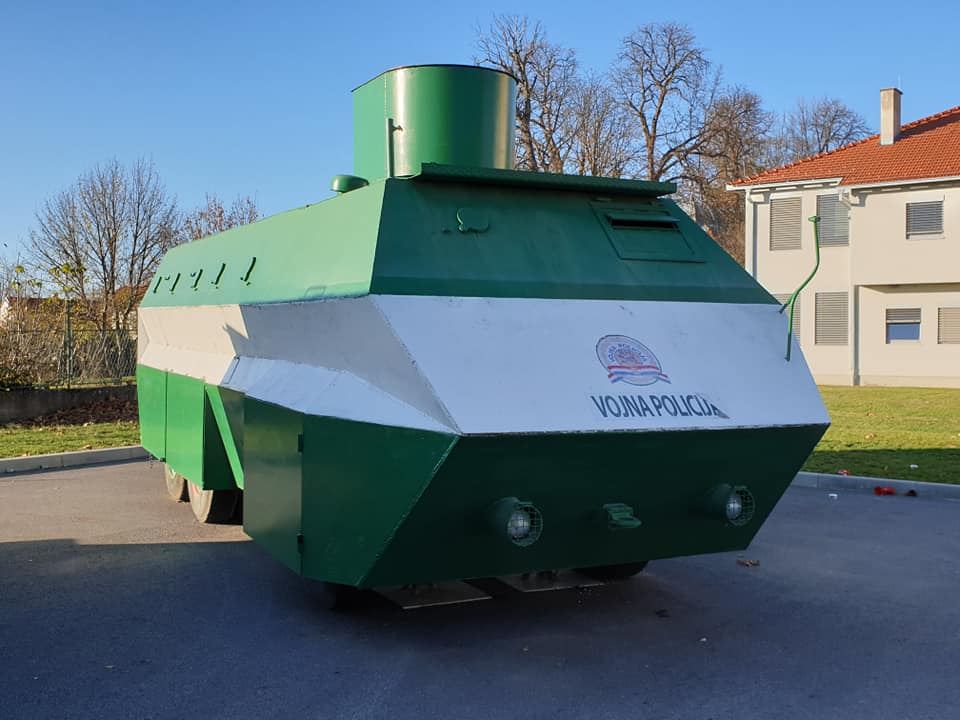
Improvised armoured carriers at their most basic.
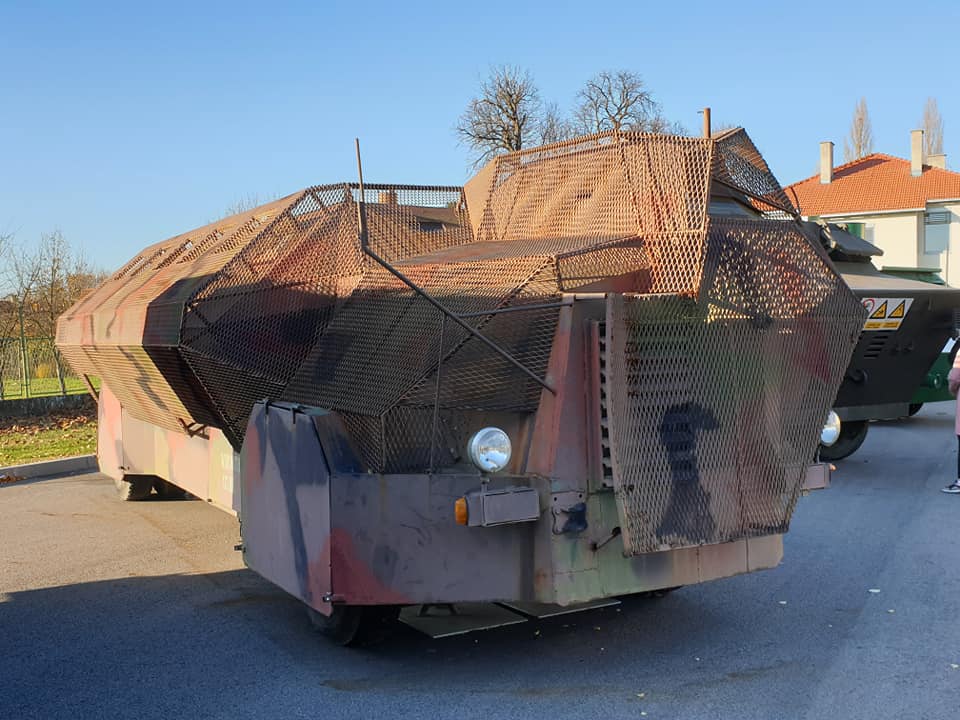
The Mad Max version.
Lunch was a fascinating affair, as people of all ages and backgrounds mixed on the wooden benches in the tents. To my left, three veterans recalling how they could judge the impending impact from the differing sounds of howitzers, to my right, a conversation with a Vukovar-born member of the Ministry for Veterans Rights. It was a fascinating chat, one to be continued over coffee in Zagreb later this month.
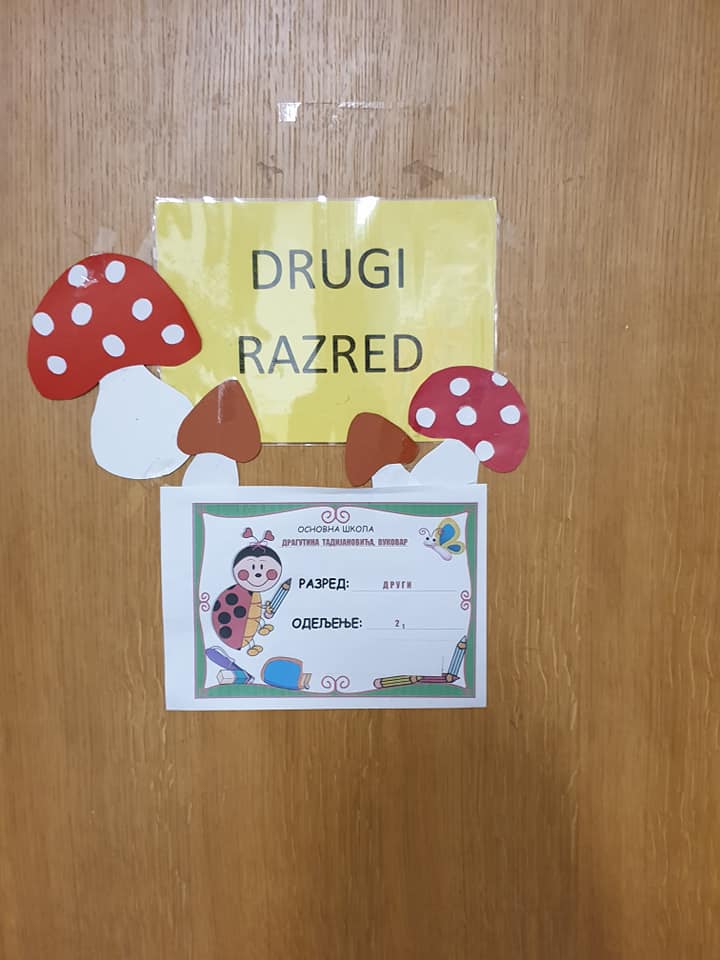
Before leaving, the Trombunjeri had one obligation in a school. I followed them in and was struck by what I saw. This most divided of cities has a large population of both Serbs and Croats. School takes place for both communities in the same building but separate lessons, Latin script for the Croats, Cyrillic for the Serbs (this is the door for the Second Grade classroom). With so many open wounds and unserved justice, that division is completely understandable.
And yet I was thinking only of the boy and that face of abundant joy earlier in the day. How to keep that joy and move his generation forward to a better and more hopeful future?
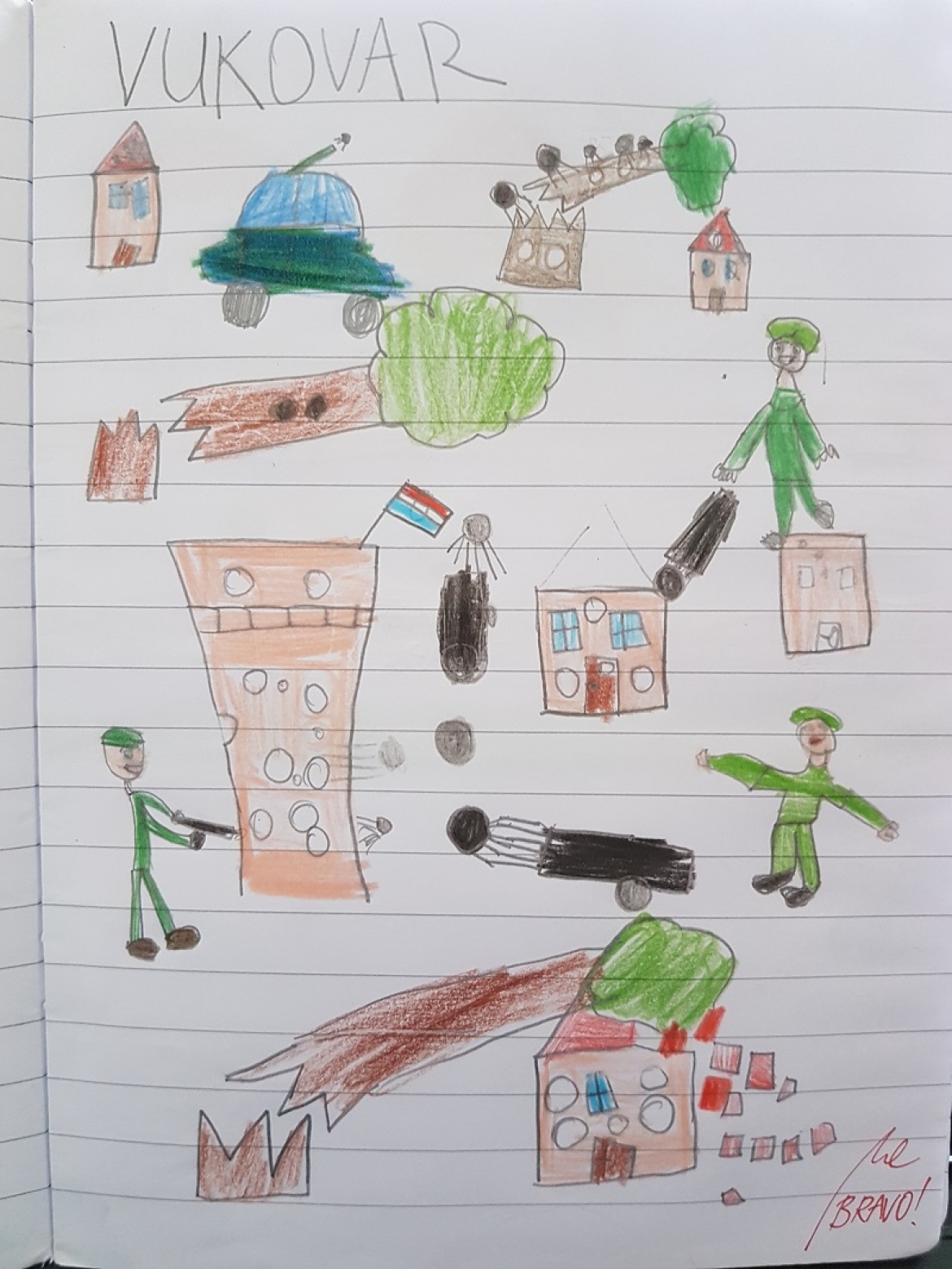
One of the things that shocked me as a foreign parent here was the homework given to 7-year-olds. My daughter got her first nightmare at the age of seven on November 19 of that year. It took me some time to figure out what had caused such distress, but then I learned about the homework. It is an incredibly difficult and emotive subject, and not one for a foreigner. But how do we remember and honour the past and move forward with the future from homework like the above to this, below?

I don’t know. I don’t even know if it is possible.
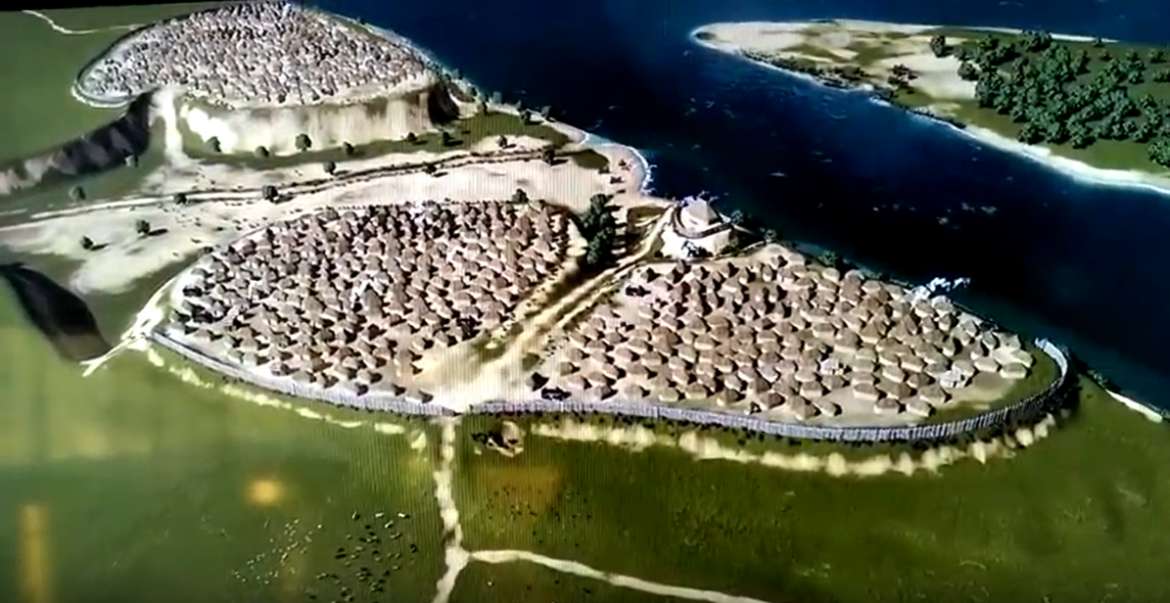
It would be easy to conclude from the media that Vukovar and the eastern region is a place of doom and gloom, but the truth is that it is absolutely fascinating, and there are so many incredible things here which can be developed. Directly across from the cemetery is one of them, one of the most sensational things in all Croatia, that very few people know about. Learn more in Vucedol Era: When Eastern Croatian Settlements Most Important in All Europe.
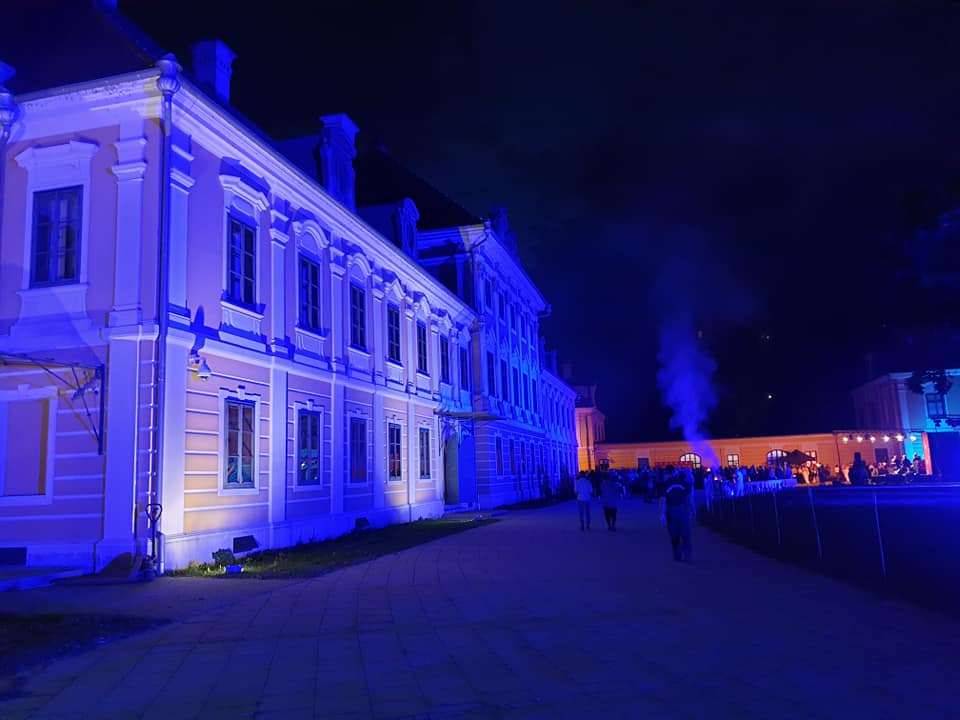
And for those who think that Vukovar is all ruined buildings, they are in for a big surprise, as this image of Eltz Palace from the recent Days of Croatian Tourism event shows.
The visit to Vukovar Remembrance Day was emotionally draining, but worth every effort. It also gave me one more layer of perspective on this fabulous but really complex country. My advice? Come and visit. Eastern Croatia is a wonderful place, the hospitality the warmest and most genuine in the whole country, and there is SO much to see and do. Here, for example, is how we filled an action-packed family weekend when we decided to Head On East.
And if you are looking to learn more about what Vukovar has to offer, here are 25 things to know.

